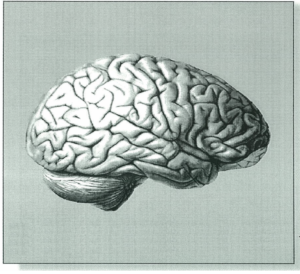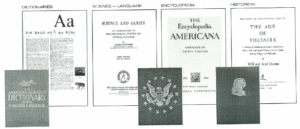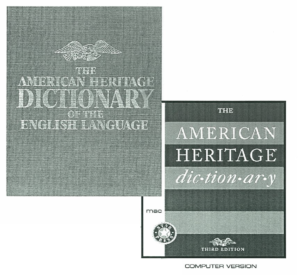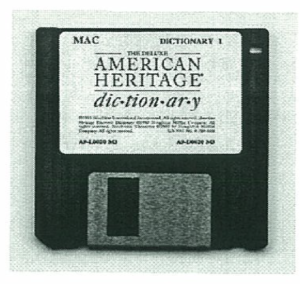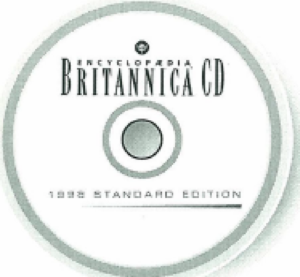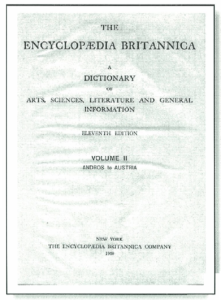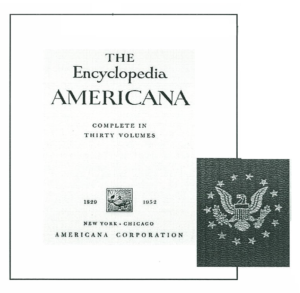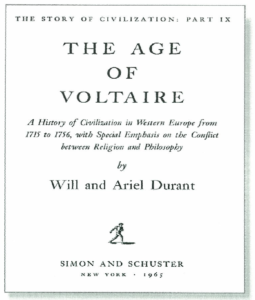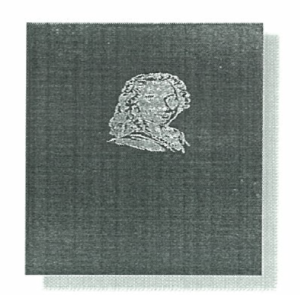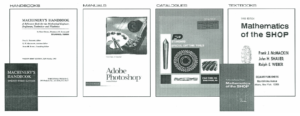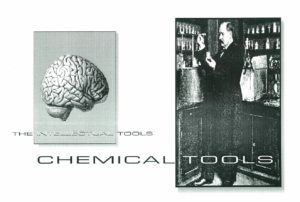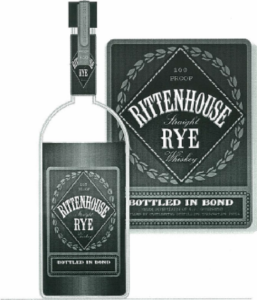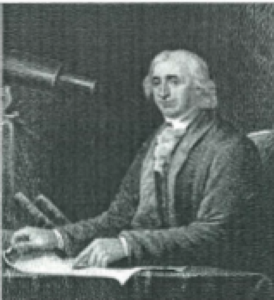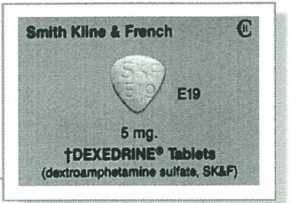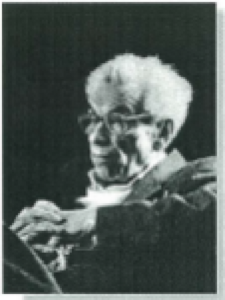THE INTELLECTUAL TOOLS
VOLUME TWO BOOK THREE CHAPTER SIX
THE INTELLECTUAL TOOLS – INTRODUCTION
The intellectual tools are an accretion of a lifetime on paper, film, tape, disks, and Brainmeat. In this chapter, a few illustrations suggest a few categories of knowledge. A partial list of information sources on the shelves of the shop and studio would list at least these:
Dictionaries: American heritage, [paper and computer], Webster unabridged, 1895, Cassell French / English, Larousse French, Webster collegiate, Webster geographic, Webster biographic, three volume century, Velasquez Spanish / English, MacKay Italian/ English, Langenscheidt German/ English.
Encyclopedias: collier, Americana, Britannica 11th. And Britannica co-rom computer disk.
Text books: there are text books treating electronics, architectural, technical, and mechanical drafting, wood working, metal working, paint technology, die making, chemistry, physics, automotive and more.
Catalogues: all sorts of catalogues are at hand: from general industrial supply, through individual industries – bearings, hydraulic, pneumatic, structural. Chemical, instruments and tooling, controls, electronics, electric, fasteners, typography, printing, etc., etc. – a valuable source of all sorts of information.
Books: a category which would include the Durant ten volume story of civilization, Alfred Korzybski science and sanity, and a selection of philosophes. Historians, novelists. Atlases, miscellany, and even Omar Khayyam.
Manuals: all sorts of manuals: computer hardware and software, machinery and tools, electronic equipment, automotive, boy scout, etc.
Magazines: scientific American, mac world, discover and a batch of unsolicited industrial magazines dealing with traffic, packaging, computers, industry, business, economics, stock, politics, government regulation, etc.
And anything else in print or in bottles is fair game.
INTELLECTUAL TOOLS – PRINT
The four volumes illustrated above qualify as the bed-rock sources of Wrye’s intellect, and are so honored here as basic intellectual tools. They are honored on the following pages with more elaborate depiction and description.
INTELLECTUAL TOOLS -DICTIONARY -HARD COVER –SOFTWARE
THE ELECTRONIC AMERICAN HERITAGE DICTIONARY ON THE COMPUTER
One of the best things to ever come down the pike, the software pike, that is, has been the American heritage dictionary full deluxe third edition with 50,406 words, their definitions, word origins / etymology, Indo-European languages sources, usage panel discussions, thesaurus, word-hunt, anagrams, and more, all as a digital publication for the computer.
This, the finest of U.S. dictionaries in print, is now accessible by one click on its computer ikon, and its text maybe easily copied for citation. Typing the questioned word, or just about any part of it, puts it on the monitor screen in less than a second with the full and same material published in the big book. Incroyable! Suspicious of a word in a definition? Click on it and it too is on screen, instantly. The whole fifty thousand words are scrollable on the right side of the screen for browsing. A mis-spelled entry is second guessed and the correct spelling is offered alongside alternate choices.
This is a fantastically powerful intellectual tool… and all on only thirteen megabytes of hard-drive disk space.
The paper print edition, esteemed by Wrye since its first printing in nineteen sixty-nine, is nevertheless no less esteemed, given its added illustrational enhancement by thousands of excellent engravings elucidating in its every page margin.
FLOPPY DISK
DIC•TION•AR•Y
- A reference book containing an alphabetical list of words, with information given for each word, usually including meaning, pronunciation, and etymology.
- A book listing the words of a language with translations into another language.
- A book listing words or other linguistic items in a particular category or subject with specialized information about them: a medical dictionary.
- Computer science. A. A list of words stored in machine-readable form for reference as by spelling-checking software. B. An electronic spelling checker. (medieval Latin Dictianerium, from Latin Dictia. Dictian-. Diction.
-American heritage dictionary
INTELLECTUAL TOOLS – SOFTWARE & HARDBACK
One of the next best things to ever come down the pike, the software pike, that again is, after the American heritage dictionary, has been the encyclopedia Britannica. The standard, full thirty-two volumes, 1998 editions, with all seventy-five thousand articles from the print version, with the Netscape navigator search engine built in, all as a digital publication for the computer, all on a co-rom disk, which is annually up-gradeable,
This finest of encyclopedias is now accessible by a double click on its ikon. Typing the name of a subject in the search box produces a “hit list” index of up to fifty titles which then can be selected from, opened and then further linked to additional relevant material by single clicks on highlighted subject titles.
This, too, is a powerful intellectual tool … And only six hundred and forty megabytes on the removable compact disk.
The encyclopedia Britannica eleventh edition
Predecessing the electronic version by eighty-eight years is the eleventh edition, the “literary edition” of the Britannica in thirty-two volumes in the “handy volume” tissue issue, just eight and a half inches tall by six and a half inches wide, the title page of randomly selected volume two is here reproduced above.
INTELLECTUAL TOOLS – ENCYCLOPEDIA – AMERICANA
EN• CV• CLO• PE• DI• A
A comprehensive reference work containing articles on a wide range of subjects or on numerous aspects of a particular field, usually arranged alphabetically. (medieval Latin encyclopedia, general education course, from alteration of Greek Enkuklios paideia, general education: Enkuklios, circular, general; encyclical+ paideia, education (from pais, paid-, child.)
Word history: the word encyclopedia, which to us usually means a large set of books, descends from a phrase that involved coming to grips with the contents of such books. The Greek phrase is Enkuklios paideia, made up of Enkuklios, “cyclical, periodic, ordinary,” and paideia, “education,” and meaning “general education, literally the arts and sciences that a person should study to be liberally educated.” copyists of Latin manuscripts took this phrase to be the Greek word enkuklopaedia, with the same meaning, and this spurious Greek word became the new Latin word encyclopedia, coming into English with the sense “general course of instruction,” first recorded in 1531. In new Latin the word was chosen as the title of a reference work covering all knowledge. The first such use in English is recorded in 1644.
-American heritage dictionary
The encyclopedia Americana, being of the nineteen fifty-two edition lies somewhere in between the two Britannica’s chronologically. It naturally could afford a more generous type size as it measures seven and a quarter inches by ten and an eighth inches, by an inch and a quarter thick. It is far more profusely illustrated than either of the other two. The maps and charts are excellently accomplished, many full color pages. Numerous full· page color plates are scattered throughout the set. These niceties are denied the 1998 C.D rom. Britannica as graphic materials are far too gluttonous for disk byte space to be included as little more than occasional token decoration.
The Americana, first copyrighted in nineteen forty-three by the encyclopedia Americana corporation, has been reprinted annually at least through the fifty-two Wrye edition, and was rumored to being still up-dated and reprinted annually at this date.
INTELLECTUAL TOOLS – HISTORY – DURANT
HISTORY
Durant Story of philosophy
Durant our oriental heritage
Durant The life of Greece
Durant The age of faith
Durant The renaissance
Durant The reformation
Durant The age of reason begins Durant the age of louis xiv
Durant The age of Voltaire
Durant Rousseau and revolution
Durant The age of napoleon
A thoroughgoing, silently ironic, treatment of the assininity of mankind from way, way, back. A marvellous background read for to form a vague and possibly a cogent appreciation of where we are coming from and the amazing realization that we have actually survived and have arrived at this current state of civilization despite the vicious ignorance and arrogance of all previous stupidities and wretchednesses. -beautifully written.
William. James Durant and Ariel Durant, Nee Ada. Or Ioa, Kaufman (respectively – B. Nov. 5, 1885, north Adams, mass., U.S.- D. Nov. 7, 1981, Los Angeles; – B. May 10, 1898, Prosurov, Russia – D. Oct. 25, 1981, Los Angeles), American husband and wife writing collaborators whose story of civilization, 11 volumes 1935-75, established them among the best known writers of popular philosophy and history.
Excerpted from Britannica® cd 98 edition 1994-1998
Leo Wrye proposes that one should intensively study and thoroughly digest the whole history of mankind and his wanton civilizations as they are supposed by scholars. Wrye then propose that one should turn the other cheek and forget the whole sorry morass of imbecile endeavor and get on with tomorrow. The lessons to be learned from the past are irrelevant, except in their superb demonstration of the utter depravity and absurdity of mankind’s putrid past exertions.
INTELLECTUAL TOOLS / PRINT
A display of a little light reading-matter close by the machine shop, on the studios poplar shelving along the east wall, sort of a sampling of the wide variety of categories embraced. The machinery handbook is the culmination of investigation and measurements produced by thousands of engineers and scientists over the last hundred or more years into the properties of materials, the capabilities of machines and the methods of application of this vast store of knowledge. A reference book for the engineer, drafsman, toolmaker and machinist, published in its twenty-first edition in 1982. There have been vast changes in the machine tool industry since, but the melting points of silicon carbide probably have not changed very much.
INTELLECTUAL TOOLS – THE WRYE STUDIO LIBRARY
The Wrye art studio library of some four hundred books has accreted haphazardly by happenstance for many years without concentrated plan or purpose. Nevertheless, that which has accreted by happenchance, has become by chance, a valuable accessible multifarious source, both written and pictorial, for background elucidation, drawing upon a wide variousness of venues, the here tendered but partial title listings attempt not to be consummately all inclusive nor exhaustive. They modestly attempt but to be but indicative of the range and scope of this checkered collection,
DICTIONARIES AND ENCYCLOPEDIAS
American heritage dictionary
American heritage dictionary-digital
Random house dictionary
Webster unabridged dictionary
Webster collegiate dictionary
Webster new world dictionary
Webster geographic dictionary
Webster biographical dictionary
New century dictionary – 3 volumes
Cassell French-English dictionary
Heath new German-English dictionary
Velasquez Spanish-English dictionary
Larousse French-English dictionary
McKay Italian-English dictionary
New Gould medical dictionary
Heath modern complete French grammar
Whiteford dictionary of grammar and usage
Evans dictionary of American usage
Encyclopedia of dictionaries
New dictionary of thoughts
Encyclopedia Americana 1952 – 34 volumes
Encyclopedia Britannica 11th edition – 32 volumes
Encyclopedia collier’s 1968 – 25 volumes
Grolier book of knowledge 1912 20 volumes
TECHNICAL
Various textbooks
Architecture drafting
Mechanical drawing
Mathematics
Crafts
Mechanics physics
Electricity
Metal-working
Graphic arts
Graphic design
Product design
Chemistry
Physics
Painting
Shop practices
Die making automotive mechanics
Plastics
Formulae
Wood working
Electronics
HISTORY
Durant story of philosophy
Durant our oriental heritage
Durant the life of Greece
Durant the age of faith
Durant the renaissance
Durant the reformation
Durant the age of reason begins
Durant the age of louis xiv
Durant the age of Voltaire
Durant Rousseau and revolution
Durant the age of napoleon
ASSORTED MISCELLANY
Art and artists sculpture
History
Philosophy
Semantics
Linguistics
Illusions
Fiction
Medical and various other
And numerous commercial catalogues encompassing many fields
VOLUME TWO BOOK THREE SUB – CHAPTER SIX B
CHEMICAL TOOLS – RYE WHISKEY
There had been some heated argument and liquid discussion on and about the content of this archive as to whether or not ethyl alcohol should be so celebrated as to be so honored with mention and inclusion herewithin. The prime archival subject, the artist, led Wrye, vehemently prevailed. The senior editor swallowed hard and drank of it darkly.
Rye whiskey has flourished for the past fifty years as such a massive contribution to the continuing combative animus in all the artist’s dark and profound mis-encounters with the whirlwind encirclements and infringements of various acrimonious and absurd life-forces, that to consciously, soberly, immorally, neglect rye whiskey, that to exclude it unmitigatedly from this serious archival accretion, would be the ultimate exaggeration of negligence, and hypocritical beyond even contemporary standards of hypocrisy and disbelief.
It might be Dare-Sayed that without the rye grape, rhetorically referring, absolutely nothing of interest could or would or should have happened to Leo Wrye, nor would or could or should Leo Wrye have happened to the world, during this part of this century that would have even ever so slightly merited its recording within this auspicious archival elaboration.
THE WORD WHISKEY
Word history: whiskey, vodka, and water seem a potent, incompatible combination. However, all three words share a common Indo-European root, owed-, “water, wet.” the differences between their present forms are partially explained by the fact that under certain conditions the Indo-European e could appear as o, or both e and o could disappear. Water is a native English word, which goes back by way of prehistoric common Germanic owatar to the Indo-European suffixed form owoda(r), with an 0. Vodka is borrowed from Russian, in which vodka is a diminutive of voda, “water.” voda goes back to the Indo-European suffixed form owoda-. Whiskey is a shortened form of usquebaugh, meaning “whiskey.” English borrowed usquebaugh from Irish Gaelic uisce beatha and Scottish Gaelic uisge beatha. A compound whose members descend from old Irish uisce, “water,” and bethad, “of life,” and mean literally “water of life.” uisce comes from the Indo-European form udskio- (without e or o).
-American heritage dictionary
In the United states, whiskey production began early in the 18th century. Major distillation centres are established in Kentucky, Pennsylvania, and Indiana. Their product is made with malt and other grains (usually corn or rye), producing a beer that is distilled to make a whiskey of 80 percent alcohol content by volume. This distillate, high in flavouring substances derived from the original raw materials, is reduced with water to about 50-52 percent alcohol and aged in unused charred white-oak barrels. Straight whiskeys may be stored in government-bonded warehouses.
Bourbon is characterized by the flavour of corn (maize), used as the main raw material. It was first produced in bourbon county, Kentucky, and the name bourbon eventually became a general term for similar corn-mash whiskeys. Sour mashes, used mainly in bourbon production, are fermented with yeast, including a portion of previously fermented yeast; other whiskeys are made from sweet mashes, employing only fresh yeast.
In the united states, straight whiskeys are named for the grains predominating in the mash, with at least 51 percent required for whiskeys designated as straight. If a mash of at least 51 percent barley malt is employed, the product is straight malt whiskey; if rye malt is used, it is straight rye whiskey. Straight bourbon mashes contain at least 51 percent corn; straight corn-whiskey mashes contain at least 80 percent. Combinations of similar straight whiskeys of different distillation periods or from different distillers are designated as blended. Rather than straight.
Whiskeys are consumed both unmixed and mixed in cocktails, punches, and highballs. The United States is the world’s largest producer and consumer of whiskey.
The Canadian whisky industry began in the early 19th century. Canadian whiskeys are light in body and flavour and are always blends of both highly flavoured and neutral grain whiskeys. They are made from mashes composed of combinations of corn, rye. Wheat, and barley malt prepared according to the formula of the individual producer. Canadian whiskeys are usually aged for at least six years, then reduced with water to an alcoholic content of about 45 percent by volume before bottling.
Excerpted from Britannica & co 98 edition 1994-1998
DAVID RITTENHOUSE
Rittenhouse David, American astronomer and mathematician: b. Germantown, PA., 2 April 1732; D. Philadelphia, 26 June 1796. His great-grandfather, Willem Rittinghuysen, a Mennonite from Holland, in 188 set up, on wissahickon creek, the first paper mill in America. From an uncle the boy inherited some books on calculation and geometry, and henceforth his life was determined. Mathematics and computation became his absorbing passion. He had great facility in mechanical invention and execution. In his ‘teens he began to make clocks of wood and metal, and his father set him up in the business of maker of mathematical instruments and clocks. He is said to have independently discovered the method of fluxions or the calculus when but nineteen, and to have foreseen its vast utility, before he heard of the claims of Leibnitz and newton.
In 1763 he laid out the 12-mile radius around Newcastle, which forms the boundary between Pennsylvania and Delaware, accurately with instruments of his own construction, and mason and Dixon accepted his results as final. In 1769 he located the point where the 41st parallel of latitude, the boundary between Pennsylvania and New York, strikes the Delaware river. The same year the Pennsylvania legislature appropriated two hundred dollars toward the observations of the transit of Venus. Rittenhouse built an observatory near his home in Norriton, and in company with a committee appointed by the American philosophical society made preparations for the occasion. His results were the best obtained and the computed parallax of the sun the most accurate then known.
Rittenhouse invented the plan of placing spider lines in the focus of the telescope, an arrangement that has done more to make accurate measurements possible than almost anything else. In 1770 he completed his famous Orrery based on computations of his own. This showed the movements of the planets and moons in elliptic orbits around their primaries, the phenomena of eclipses and the relative places of the members of the solar system over a time of 5,000 years preceding or following. For this he received three hundred dollars from Princeton university, and a like sum from the legislature of Pennsylvania for a second Orrery for the university of Pennsylvania. The first was injured by the British troops in the revolutionary war.
Then followed computations of the orbits of comets, surveys of the land between the Delaware and Susquehanna for canal purposes, calculations for almanacs and surveys for a series of dams to make the Schuylkill river navigable. He was engineer and finally president of the committee of safety of his state during the revolutionary war, and plunged into military problems with all his energy.
In 1776 he was made a member of the assembly of Pennsylvania, the earliest under the reorganized revolutionary movement, and was active in the creation of the new constitution, the first for the state of Pennsylvania. In 1777 and for twelve successive years he was elected state treasurer. He was also trustee of the loan office.
He determined the boundaries of Pennsylvania and the line between New York and Massachusetts. From 1779 to 1782 he was professor of astronomy in the university of Pennsylvania and afterward trustee and vice-provost. In 1792 he was made director of the united states mint by president Washington. After three years he resigned and returned to scientific work. He succeeded franklin as president of the American philosophical society in 1790.
His publications (about twenty) appeared in the transactions of the American philosophical society. The most popular was an oration on astronomy. An interesting eulogie was delivered. After his death by or. Benjamin rush. His life was written by his nephew, William Barton, in 1813, and by James Renwick in sparks’ (American biography.) An account of him, by S. W. Pennypacker, was issued in 1882.
-Excerpted from the Encyclopedia Americana. Edition 1952
No wonder they proudly named a rye whiskey after him!
AMPHETAMINE
It was the fall of nineteen forty-two. Leo Wrye was about to submerge himself in Danville, Kentucky, at the aforemention, (ungraciously) centre college. His father, the gynecologist, was about to patriotically take wings for the united states air force for to fight the good fight.
For some totally unrememberable reason, Wrye Pere offered, recommended, or forced upon young Wrye, a prescription for the latest wonder-drug which hit the market that season -amphetamine Sulphate. It was to be a romance of forty-six years.
It had been discovered, among other things, that as little as one five milligram tablet had the marvelous effect of clearing the cobwebs from the addled mind, sharpening the memory, unhanging hangovers, stimulating the imagination, uplifting the soul, driving one on to new heights of accomplishment never before conceived, for about a nickle apiece. Wrye bought into this bonanza with a vengeance bordering on fidelity.
The prescription was infinitely refillable.
At the university of Louisville Wrye was brilliant.
Becoming a soldier in the spring of forty-four, Wrye found that the military pharmacies had no trouble with amphetamine, they honored his prescription readily, and free of charge. Wrye’s prescription was written for the treatment of “mild narcolepsy” which it did indeed treat very well.
All through his military career he religiously treated his “mild narcolepsy.” after his military discharge and his return to civilian life, and his return to the scholarly life in the art department at the university of Kentucky, he never wavered in his pharmacological dedication. His return to France in nineteen forty-eight presented no pharmacological difficulties either. Les Francais had also discovered the glorious pill and were happy to fill Wrye’s prescription to help him keep his “milo narcolepsy” in check.
After using up all of France he needed, Wrye once again retook up residence back again in the backwoods of America -Louisville, Kentucky-to be precise. The apalling dearth of art interest drove amphetamine-laced Wrye to new towering exploits in the name of “culture.” “the arts in Louisville scene” and all subsequent artistic triumphs, were made ineffable reality thanks to those five milligram triangular pills.
By the eighties “substance abuse” was catching on pretty good. Prescription rules became stiffer -a new prescription every time. no refills. Wrye’s aging father cooperated. After all he was the one who hooked Wrye initially. Then at ninety-one he forgot to renew his narcotic license. That was all she wrote. Wrye had to go cold-turkey from then on. Somehow he muddled through.
Amphetamine (am-fete-men”, -min) noun
- A colorless, volatile liquid, CSH13N, used primarily as a central nervous System stimulant.
- A derivative of amphetamine, such as Dextroamphetamine or a phosphate or sulfate of amphetamine, used as a central nervous system stimulant in the treatment of certain conditions, such as narcolepsy and depression. [(a(lpha) + m(ethyl) + ph(enyl) + et(hyl) + amine.]
-The American heritage dictionary
WARNING:
Amphetamines have a high potential for abuse. They should thus be tried only in weight reduction programs for patients in whom alternative therapy has been ineffective. Administration of amphetamines for prolonged periods of time in obesity may lead to drug dependence and must be avoided.
Particular attention should be paid to the possibility of subjects obtaining amphetamines for non-therapeutic use or distribution to others, and the drugs should be prescribed dr dispensed sparingly.
Description: Dexedrine (dextroamphetamine sulfate, sk&f, is the Dextro isomer of the compound D-alpha amphetamine sulfate, a sympathomimetic amine of the amphetamine group. Chemically, dextroamphetamine is D-alphamethylphenethylamine, and is present in all forms of ‘Dexedrine’ as the neutral sulfate.
Tablets:
Each triagular, orange, scored tablet is Debossed SKF and E19 and contains dextrdamphetamine sulfate, 5 mg inactive ingredients consist of calcium sulfate, FD&C yellow NO.5 (tattraxine), FO&C yellow NO.6, gelatin, lactose, mineral oil, starch, stearic acid, sucrose, talc and trace amounts of other inactive ingredients.
AMPHETAMINE – F Y I
Drug abuse and dependence: dextroamphetamine sulfate is a schedule ii controlled substance.
Amphetamines have been extensively abused. Tolerance, extreme psychological dependence, and severe social disability have occurred. There are reports of patients who have increased the dosage to many times that recommended. Abrupt cessation following prolonged high dosage administration results in extreme fatigue and mental depression. Changes are also noted on the sleep E.E.G.
Manifestations of chronic intoxication with amphetamines include severe dermatoses, marked insomnia, irritability, hyperactivity, and personality changes. The most severe manifestation of chronic intoxication is psychosis, often clinically indistinguishable from schizophrenia. This is rare with oral amphetamines.
Overdosage: individual patient response to amphetamines varies widely. While toxic symptoms occasionally occur as an idiosyncrasy at doses as low as 2 mg., they are rare with doses of less than 15 mg.; 30 mg. Can produce severe reactions. Yet doses of 400 to 500 mg. Are not necessarily fatal.
In rats, the oral LD-50 of dextroamphetamine sulfate is 96.8 mg/kg.
Symptoms – manifestations of acute over-dosage with amphetamines include restlessness, tremor, hyper-reflexia, rapid respiration, confusion. Assaultiveness, hallucinations, panic states.
Fatigue and depression usually follow the central stimulation.
Cardiovascular effects include arrhythmias, hypertension or hypotension and circulatory collapse. Gastrointestinal symptoms include nausea, vomiting, diarrhea and abdominal cramps. Fatal poisoning is usually preceded by convulsions and coma.
Treatment-management of acute amphetamine intoxication is largely symptomatic and includes gastric lavage and sedation with a barbiturate.
Experience hemedialysis or peritoneal dialysis is inadequate to recommendation in this regard. Acidification of the urine increases amphetamine excretion. If acute, severe hypertension complicates amphetamine overdosage, administration of intravenous phentolarnine (regitine ciba) has been suggested. However, a gradual drop in blood pressure will usually result when sufficient sedation has been achieved.
Chloropromazine antagonizes the central stimulant effects of amphetamines and can be used to treat amphetamine intoxication.
Dosage and administration: regardless of indication, amphetamines should be administered at the lowest effective dosage and dosage should be individually adjusted. Late evening doses, particularly with the ‘Spansule’ capsule form should be avoided because of the resulting insomnia.
Narcolepsy: usual dose 5 to 60 milligrams per day in divided doses, depending on the individual patient response. Narcolepsy seldom occurs in children under 12 years of age; however, when it does, Dexedrine (dextroamphetamine sulfate, SK&F) may be used. The suggested initial doses for patients aged 6-12 is 5 mg. Daily; daily dose may be raised in increments of 5 mg. At weekly intervals until optimal response is obtained. In patients 12 years of age and older, start with 10 mg. Daily; daily dosage may be raised in increments of 10 mg. At weekly intervals until optimal response is obtained.
AMPHETAMINE- FOOTNOTE -DISCOVER MAGAZINE
The correspondence reprinted below from the October issue of that fine publication, discover magazine, seemingly seemed germane to the leo Wrye intellectual chemical tools discussion printed on the previous pages.
I was disappointed that Paul Hoffman felt it necessary to sugarcoat Paul Erdos’ lifelong use of amphetamines by referring to them euphemistically as “other stimulants” -“man of numbers,” -discover magazine -July 98.”
Erd6s himself was certainly not the least bit apologetic about living on speed. He felt-apparently correctly-that speed helped him create mathematics.
When erd6s mother died, he became quite depressed, and his doctor prescribed amphetamines to improve his mood. Erdo’s took these for years, even though his friends advised him to quit. Finally, a fellow mathematician bet erdos that he couldn’t stop taking the drug, erd6s stopped, cold turkey, for about a month. When he collected the bet, he said that his output had been drastically reduced during that month and that that time was “lost to mathematics.” he then resumed taking speed and his prodigious output returned.
Does this mean that anyone who takes amphetamines will become a brilliant mathematician? -not at all. But it does mean that you can’t believe every piece of drug war propaganda that you hear, either. As a science magazine, you owe it to your readers to give them the facts, politicaly correct or not.
Jim Showalter -Los Gatos, cal.
The editors reply: a book excerpt is, after all, just an excerpt. Paul Hoffman’s “the man who loved only numbers” does indeed mention erdos’ month long abstinence from amphetamines and the unfortunate effect it had on his output. And the following passage, which describes er06s’ reaction to the magazine article in the Atlantic monthly on which Hoffman’s book was based, offers a touching assessment of erdos’ attitude toward his own drug use:
“what do you think?” I finally asked.
Erdos shook his head from side to side. “it’s okay.” he said. “except for one thing. You shouldn’t have mentioned the stuff about Benzedrine,” he said. “it’s not that you got it wrong, it’s just that I don’t want kids who are thinking about going into mathematics to think that they have to take drugs to succeed.”
-excerpted from discover magazine -“action and reaction” letters to the editors -October 1998
Paul Erdos
PAUL ERDOS – Hungarian mathematician (B. March 26, 1913, Budapest, hung. -D. Sept. 20, 1996, Warsaw, pol.), pioneered the fields of number theory and combinatorics and regarded as one of the century’s greatest mathematicians. After receiving (1934) a Ph.D. From the university of Budapest, erdos was awarded a postdoctoral fellowship at the university of Manchester, Eng. In 1938 he immigrated to the U.S. on fellowship at the institute for advanced study in Princeton, N.J.,
-excerpted from encyclopedia Britannica® CD 98 edition 1994-1998
